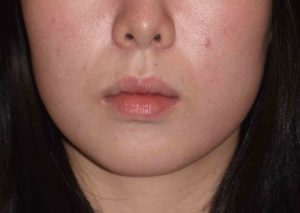Background: The chin implant is the most historic of all the facial implants and still the most commonly performed facial implant procedure. Because access to the chin for implant placement does have any major impediments and the distance from either inside the mouth or below the chin is short, the chin implant is often viewed as ‘simple’ operation. But it is exactly that thinking that up to 1/3 of all primary chin implant placements undergo a subsequent revision or even removal.
The primary factors for success in chin implant surgery is implant selection and implant placement. While these two factors are obvious there are many variables involved in both with the greatest number of them being in the implant selection process. The implant selection process is heavily influenced, or at least should be, by the gender of the patient. While implants appear unisexual or interchangeable between men and women…they are not.
When it comes to implant placement there are less options for where to place it on the curve of the chin. It is usually question of whether it should be placed on the superior pogonion or the more inferior gnathion. (The menton is reserved only for vertical lengthening custom chin implants) Usually most chin implants are designed to be placed closer to the gnathion. But there are indications for pogonoin chin implant placement.


The rationale of using a non-extended anatomic chin implant was to not cause any chin widening and even give it a bit of a V-shape. Putting it higher up in the pogonion chin position was to avoid any risk of of vertical chin lengthening.

They concept of a chin implant is conceptually straightforward but executing it for aesthetic success is a bit more complex. Have a 3D understanding of the patient’s chin augmentation goals, Proper implant selection (and secondary reshaping of it if needed) and placement on the bone are all factors are all variables which need to be considered in each patient.
Case Highlights:
1) Chin implant augmentation needs to consider more than just a side profile to determine how much horizontal chin augmentation is needed/desired.
2) Women in particular rarely ever want a wider or broader chin appearance.
3) Chin implants can inadvertently lengthen the chin at the gnathion location due to soft tissue roll out.
Dr. Barry Eppley
Indianapolis, Indiana








